The Aga Khan Award for Architecture was established by Aga Khan IV (Prince Karim al-Hussaini) in 1977. The idea for this award emerged from his reflections on the state of architecture in the Islamic world during the 1970s, and his conviction about the importance of the built environment in shaping a society’s quality of life.

At that time, and still today, most architectural prizes applaud the accomplishments of individual architects. In contrast, the Aga Khan Award selects projects that improve the quality of life and recognizes all those who contribute to creating a positive impact on society.
In the four decades since its establishment, the Award has documented more than 9,000 projects and actively contributed to architectural discourse. It has created awareness of the social impact of architecture and has shown the discipline’s ability to respond to issues of local, national, and international relevance.
The Aga Khan Award for Architecture is presented in three-year cycles and carries a monetary prize totaling US$1 million, shared among multiple winning projects. It recognizes projects, teams, and stakeholders in addition to buildings and individual architects. The Award has now entered its 16th cycle (2023–25), showcasing trailblazing projects that redefine the role of architecture in society.
The announcement made in Geneva revealed the contenders selected from a pool of 369 projects vying for a share of the US$1 million prize. After months of rigorous evaluation, including site visits and jury deliberations, the seven winners were announced on 2 September 2025. The official award ceremony is scheduled to take place in the Kyrgyz Republic on 15 September 2025.
The shortlisted projects reflect architecture that goes beyond aesthetics. These spaces respond to community needs, reinforce cultural traditions, and foster sustainability—core values at the heart of architectural philosophy.
The finalists spanned 15 countries and were chosen for their innovation and impact.
The winning works include projects by renowned architects such as Marina Tabassum and ZAV Architects, in locations including Palestine, Bangladesh, Iran, China, Egypt, and Pakistan.
Let us take a look at the winners:
Khud Bari, Bangladesh
Architect: Marina Tabassum Architects
A portable bamboo-and-steel modular housing solution designed for flood and climate refugees. The project combines affordability, dignity, and resilience, offering an urgent response to climate-induced migration.
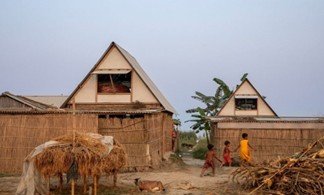
West Wusutu Village Community Centre, China
Constructed from salvaged bricks, this community centre provides cultural and educational spaces for an ethnically diverse village. It highlights architecture’s role in reconciliation, identity, and shared belonging.
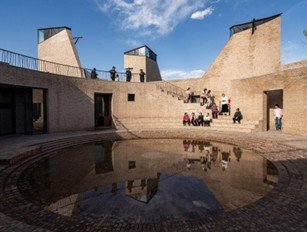
Revitalisation of Historic Esna, Egypt
This project rejuvenated the economy and civic pride of an entire town through the regeneration of heritage sites, positioning architecture as a tool for urban healing.
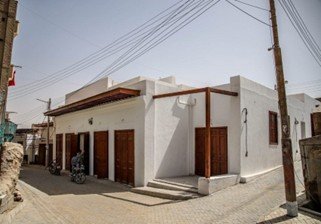
Majara Residence and Community Redevelopment, Iran
Located on Hormuz Island, these playful and colourful domed structures reinvent sustainable tourism while celebrating vernacular architecture. The project proves that architecture can be both whimsical and socially transformative.
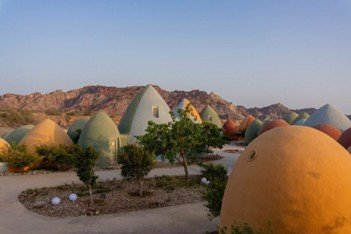
Jahad Metro Plaza, Iran
A formerly utilitarian metro station has been repurposed into a vibrant public square, emphasizing accessibility and the use of tactile local materials.
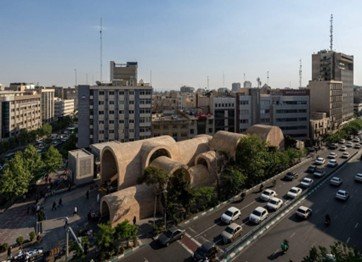
Vision Pakistan, Islamabad, Pakistan
A visually striking and cost-effective NGO headquarters featuring a perforated concrete jaali façade. The design fuses traditional craft with modern identity while promoting youth empowerment.
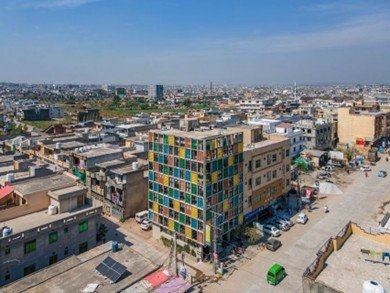
Wonder Cabinet, Bethlehem, Palestine
A creative hub that champions local craft, education, and culture. It restores hope and belonging to a community navigating hardship and uncertainty.
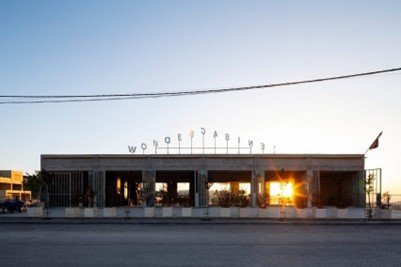
These projects collectively advance the Award’s vision of architecture as an agent of inclusivity, resilience, and environmental stewardship. As noted by members of the jury and steering committee:
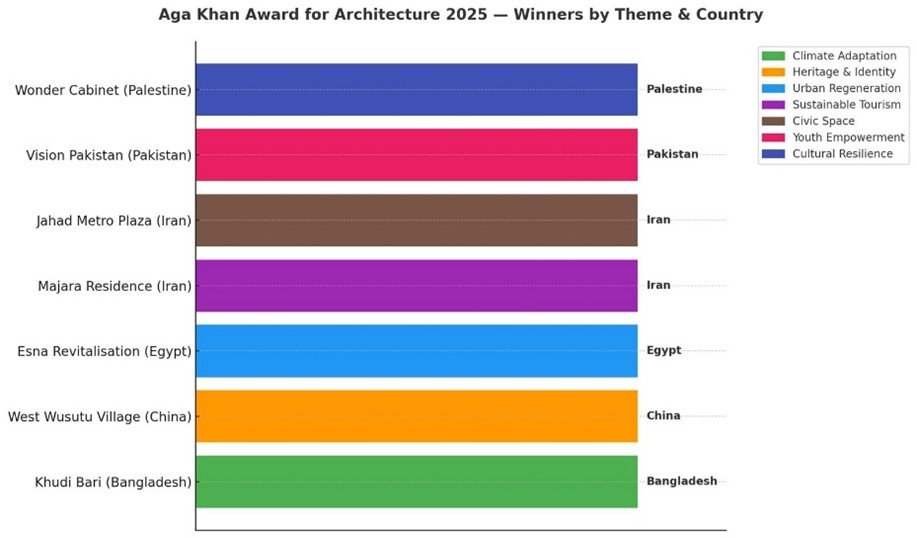
“Architecture can—and must—be a catalyst for hope, celebrating projects that unite society, sustainability, and pluralism.”
Prince Rahim Aga Khan further emphasized:
“Inspiring younger generations to build with environmental care, knowledge, and empathy is among the greatest aims of this Award.”
Awards Theme and Significance
The Aga Khan Award for Architecture 2025 reinforced the discipline’s role as one that extends far beyond buildings. As the architectural world looks ahead to the next cycle, the 2025 winners will stand as landmarks of resilience, inclusivity, and creativity—a testament to the Award’s enduring legacy since its inception in 1977.
References
- Aga Khan Award for Architecture – Wikipedia
- Aga Khan Development Network – Aga Khan Award for Architecture
- Architectural Record – 2025 Winners of the Aga Khan Award for Architecture Announced
- Canadian Architect – 2025 Aga Khan Award Winners
- Dezeen – Aga Khan Award for Architecture 2025 Winners
